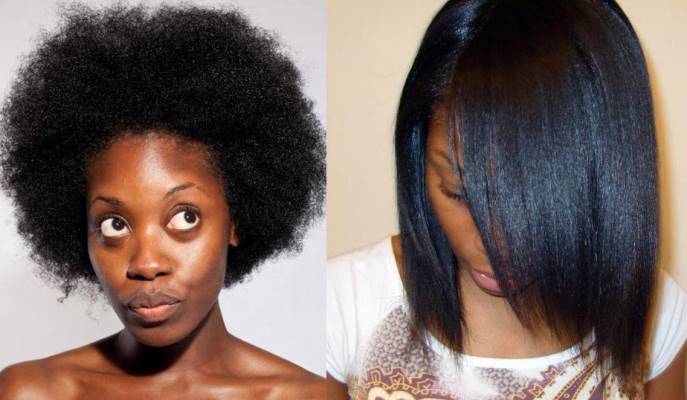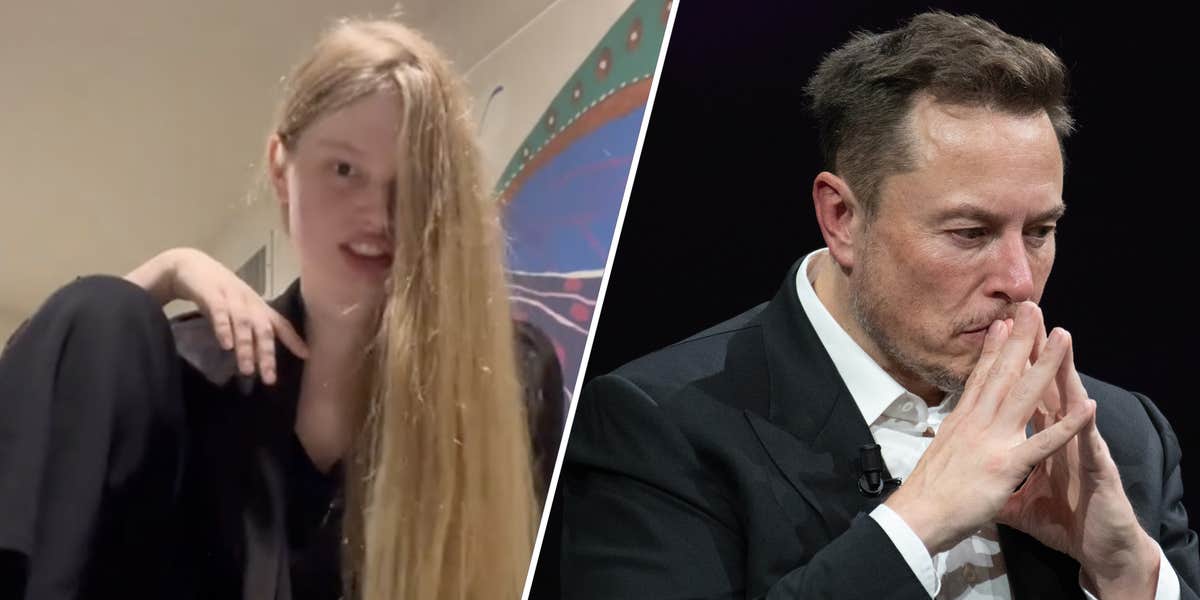How Synthetic Hair Braids Pose A Health Risk To Black Women

Table of Contents
Traction Alopecia from Tight Braiding
Understanding Traction Alopecia
Traction alopecia is a type of hair loss caused by prolonged pulling or tension on the hair follicles. Tight braiding styles, particularly those using synthetic hair extensions, are a significant contributor to this condition. The constant pulling and tugging on the hair follicles weakens them over time, leading to inflammation, damage, and ultimately, hair loss.
-
How Tight Braiding Damages Hair: The force exerted by tightly braided synthetic hair extensions surpasses the natural strength of the hair follicles, causing them to become stretched and damaged. This damage can lead to miniaturization of the hair shaft and eventual cessation of hair growth.
-
Symptoms of Traction Alopecia: Early symptoms might include tenderness, itching, or pain at the hairline or where braids are most tightly pulled. As the condition progresses, noticeable hair thinning, receding hairlines, and visible bald patches may develop.
-
Prevalence in Black Women: Protective styling, such as braids, is common among Black women to maintain healthy hair. However, the high frequency of tight braiding and the use of heavy synthetic extensions increases their susceptibility to traction alopecia.
-
Long-Term Effects: If left untreated, traction alopecia can result in permanent hair loss and scarring. Early intervention is crucial to prevent irreversible damage. [Insert high-quality image showcasing traction alopecia].
Infections and Scalp Irritation from Synthetic Hair Materials
Bacteria and Fungi Growth
Synthetic hair, while convenient and versatile, can create a breeding ground for bacteria and fungi. The synthetic material itself doesn’t cause infection, but it can trap sweat, dirt, and oils against the scalp, creating a moist environment ideal for microbial growth.
-
Importance of Hygiene: Maintaining impeccable scalp hygiene is paramount when using synthetic braids. Regular cleansing of both the scalp and the braids is crucial to prevent infections.
-
Common Scalp Infections: Folliculitis (inflammation of hair follicles) and tinea capitis (ringworm) are common scalp infections associated with synthetic hair braids. These infections can lead to significant discomfort, inflammation, and even scarring if left untreated.
-
Scalp Irritation: Some individuals may experience allergic reactions or irritation from the synthetic materials themselves. Certain synthetic fibers may trigger sensitivities, causing itching, redness, and inflammation. [Insert image illustrating a scalp infection].
-
Choosing Hypoallergenic Hair: Opting for hypoallergenic synthetic hair and ensuring meticulous cleaning can mitigate the risk of infections and irritation.
Chemical Exposure from Hair Products Used with Synthetic Braids
Harmful Chemicals in Hair Products
Many hair products used in conjunction with synthetic braids contain harsh chemicals that can negatively impact scalp health. These chemicals, often found in gels, sprays, and other styling products, can lead to various health problems.
-
Harmful Chemicals: Parabens, sulfates, and other harsh chemicals can disrupt the scalp's natural balance, leading to dryness, irritation, and allergic reactions. Long-term exposure can potentially contribute to more serious health concerns.
-
Importance of Reading Labels: Always carefully read product labels and choose hair care products with natural ingredients and minimal chemical additives.
-
Allergic Reactions: Some individuals may develop allergic contact dermatitis due to prolonged exposure to certain chemicals in hair products. Symptoms include itchy rashes, redness, swelling, and blistering.
-
Safer Alternatives: Explore natural and organic alternatives to conventional hair care products. Many companies offer safe, chemical-free options that are gentler on the scalp.
Avoiding Synthetic Hair Braids Health Risks
Choosing Safer Braiding Practices
While synthetic hair braids offer a fashionable and convenient styling option, minimizing health risks requires careful attention to braiding techniques and overall hair care.
-
Avoid Excessively Tight Braids: The most critical step in preventing traction alopecia is to avoid overly tight braiding. Proper braiding techniques should allow for some give and shouldn't cause pain or discomfort.
-
Lighter Synthetic Hair: Using lighter synthetic hair extensions can reduce the overall tension on the hair follicles.
-
Regular Scalp Checks: Regularly inspect your scalp for any signs of irritation, infection, or hair loss.
-
Breaks Between Braids: Allow your scalp and hair to rest between wearing braids. This allows for restoration and reduces the cumulative stress on your hair follicles.
-
Professional Stylist: Seek a professional stylist experienced in protective styling techniques that minimize stress on the hair and scalp.
-
Proper Hair Washing and Maintenance: Follow a proper hair washing and maintenance routine to keep your scalp clean and healthy while wearing braids.
Conclusion
The use of synthetic hair braids presents several potential synthetic hair braids health risks, primarily traction alopecia, scalp infections, and chemical exposure. By prioritizing scalp health and following the preventative measures outlined above—including choosing less damaging braiding practices, selecting hypoallergenic products, and maintaining meticulous hygiene—Black women can significantly reduce their risks. Educate yourself and others about these potential dangers. Research stylists skilled in protective styling, choose high-quality, hypoallergenic synthetic hair, and prioritize good scalp hygiene to minimize synthetic hair braids health risks. Remember to advocate for healthy hair practices amongst your friends and family.

Featured Posts
-
 Benson Boone And Lainey Wilson To Headline American Music Awards
May 27, 2025
Benson Boone And Lainey Wilson To Headline American Music Awards
May 27, 2025 -
 Listeia Se Spiti Sti Xalkidiki Leptomereies Apo Tin Astynomia
May 27, 2025
Listeia Se Spiti Sti Xalkidiki Leptomereies Apo Tin Astynomia
May 27, 2025 -
 Janet Jackson Honored With Icon Award At 2025 Amas
May 27, 2025
Janet Jackson Honored With Icon Award At 2025 Amas
May 27, 2025 -
 Epidromi Se Ilektrika Aytokinita Klopi Kalodion Se Vinteo
May 27, 2025
Epidromi Se Ilektrika Aytokinita Klopi Kalodion Se Vinteo
May 27, 2025 -
 Kai Cenat Brings Streamer University To Akron University A Shocking Surprise
May 27, 2025
Kai Cenat Brings Streamer University To Akron University A Shocking Surprise
May 27, 2025
Latest Posts
-
 Elon Musks Daughters Transition And Modeling Career Public Perception And Impact
May 30, 2025
Elon Musks Daughters Transition And Modeling Career Public Perception And Impact
May 30, 2025 -
 Vivian Musks Modeling A New Chapter After Name Change And Family Distance
May 30, 2025
Vivian Musks Modeling A New Chapter After Name Change And Family Distance
May 30, 2025 -
 Elon Musks Daughters Modeling Debut Family Dynamics And Public Reaction
May 30, 2025
Elon Musks Daughters Modeling Debut Family Dynamics And Public Reaction
May 30, 2025 -
 Vivian Jenna Wilsons Modeling Career A Look At Elon Musks Daughter
May 30, 2025
Vivian Jenna Wilsons Modeling Career A Look At Elon Musks Daughter
May 30, 2025 -
 Elon Musks Daughter Vivian Modeling Debut Sparks Debate
May 30, 2025
Elon Musks Daughter Vivian Modeling Debut Sparks Debate
May 30, 2025
